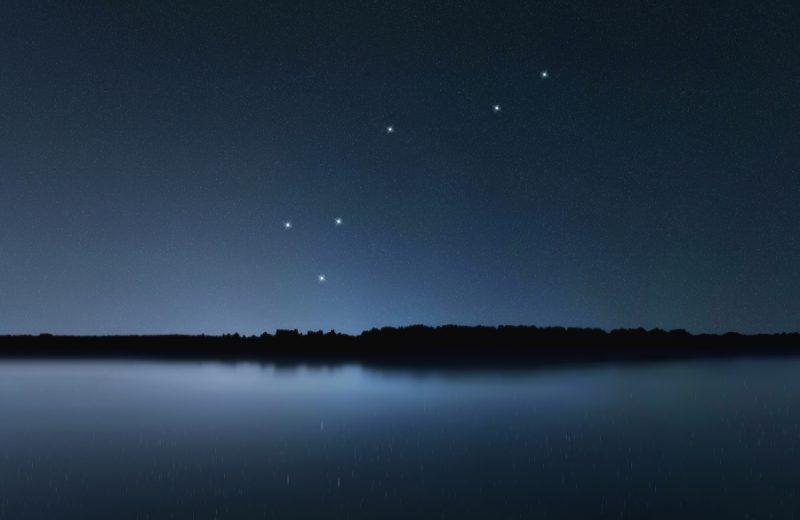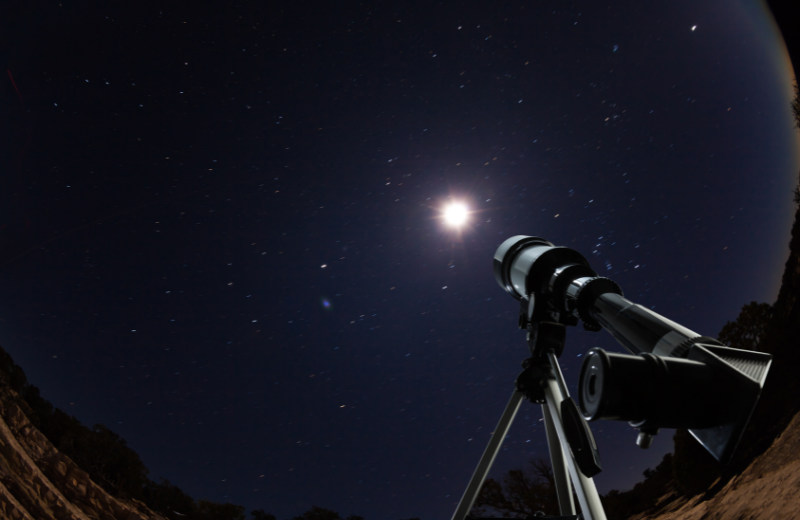If you’re someone fascinated by the night sky, the Dorado constellation offers a wealth of intrigue. It’s not one of the most famous constellations, but it holds a special place in the southern sky, particularly for those interested in deep space phenomena.
In this guide, you'll find everything you need to know about Dorado, from its meaning and its place in the sky to the stars and galaxies it contains.
Jump to:
Recommended for you!
Best SellersWhat is the Dorado Constellation?
Dorado is a small constellation located in the southern hemisphere. Its name comes from the Spanish word for 'dolphinfish' or ‘golden fish’. The Dorado constellation was named in the late 16th century by Dutch navigators Pieter Dirkszoon Keyser and Frederick de Houtman during their voyages to the southern seas.
What is special about the Dorado constellation?
Dorado may not be as well-known as Orion or the Big Dipper, but it’s unique in that it hosts part of the Large Magellanic Cloud (LMC), one of the closest galaxies to the Milky Way. This makes Dorado an important constellation for observing star clusters, nebulae, and supernova remnants.
What Does Dorado Look Like?

The Dorado constellation is somewhat faint, making it a bit of a challenge to spot in the night sky. It doesn’t have any particularly bright stars, but it contains several notable deep-sky objects. Its most famous star, S Doradus, is a hypergiant star and one of the most luminous stars known, located in the LMC.
Although its stars may not stand out, Dorado's deep-sky features make it a worthy target for telescope observation.
The Dorado Constellation Myth
Dorado doesn’t have a strong association with ancient mythology. Its name and story are rooted more in exploration than in ancient legends. The constellation was one of many named by Keyser and de Houtman as they charted the southern sky, helping to fill gaps in astronomical knowledge of that region.
What is the Meaning of the Dorado Constellation?

In Spanish, ‘Dorado’ means ‘golden’ or ‘gilded’. It refers to a type of fish known as the dolphinfish or mahi-mahi, which has golden scales and can be found in tropical oceans. This link to the sea and exploration ties into the constellation’s history of being named during a time of nautical discovery.
Dorado's Stars
Although none of Dorado's stars are exceptionally bright, there are a few worth noting. The most prominent is S Doradus, a hypergiant variable star located in the LMC. It is one of the brightest stars in the known universe, with a luminosity several million times that of the Sun.
Another interesting object is the binary star system Alpha Doradus, made up of two stars orbiting each other. These stars are relatively faint to the naked eye but become visible through binoculars or a small telescope.
Nebulae in the Dorado Constellation
Dorado is home to several impressive nebulae, particularly due to its proximity to the Large Magellanic Cloud. This includes the Tarantula Nebula, one of the most active star-forming regions in the local universe. With a telescope, the Tarantula Nebula becomes a breathtaking sight, revealing its swirling clouds of gas and newborn stars.
Another fascinating object is the Supernova Remnant 1987A, the remnant of a supernova that exploded in the LMC. This supernova was one of the brightest observed from Earth in recent centuries and provided a wealth of information to astronomers.
Finding Dorado in the Sky

Dorado is best observed from the southern hemisphere, making it a fascinating target for stargazers in regions like Australia, New Zealand, and parts of South America. While it isn’t visible from most of Europe or North America, its southern position offers unique opportunities for those located below the equator.
Locating Dorado
To locate Dorado, begin by finding the nearby constellation Hydrus, which sits close to Dorado in the night sky. Another helpful marker is Canopus, the second-brightest star in the sky. Once you've identified Canopus, look below Hydrus and southeast of the more famous constellation Orion, and you’ll find Dorado.
Viewing Dorado with Binoculars or a Telescope
- With Binoculars: While Dorado's stars are relatively faint, binoculars will help bring them into focus, allowing you to appreciate the constellation’s subtle beauty.
- With a Telescope: A telescope is particularly useful for exploring Dorado’s deeper treasures, such as the Large Magellanic Cloud and its many nebulae, like the Tarantula Nebula, offering a truly remarkable viewing experience.
The Best Viewing Times
The best time to view Dorado is during the summer months of the southern hemisphere, especially in the clear evening hours. For the best results, find a location with minimal light pollution and let your eyes adjust to the darkness. Under optimal conditions, you’ll be able to explore Dorado's hidden wonders in the night sky.
Though Dorado is primarily a southern hemisphere constellation, some tropical regions in the northern hemisphere might be able to catch a brief glimpse at certain times of the year.
Recommended for you!
Best SellersFun Facts About Dorado
- Dorado contains part of another galaxy: Though Dorado is part of our Milky Way, it also hosts a portion of the Large Magellanic Cloud, a nearby dwarf galaxy orbiting the Milky Way. This makes it a fantastic constellation for observing deep-sky objects.
- Neighbouring constellations are just as intriguing: Dorado is located near several other constellations in the southern sky, including Hydrus, Reticulum, and Mensa. These constellations offer additional celestial wonders to explore.
Study Astronomy for £29
The Dorado constellation is a stunning and significant part of the night sky, offering beauty and rich mythology. If you're inspired to delve deeper into the wonders of astronomy, why not explore the Astronomy Diploma Course with Centre of Excellence? Whether you're a beginner or someone with more experience, this course will guide you through everything you need to know about the stars, constellations, and galaxies. And for a limited time, you can enrol for just £29!













